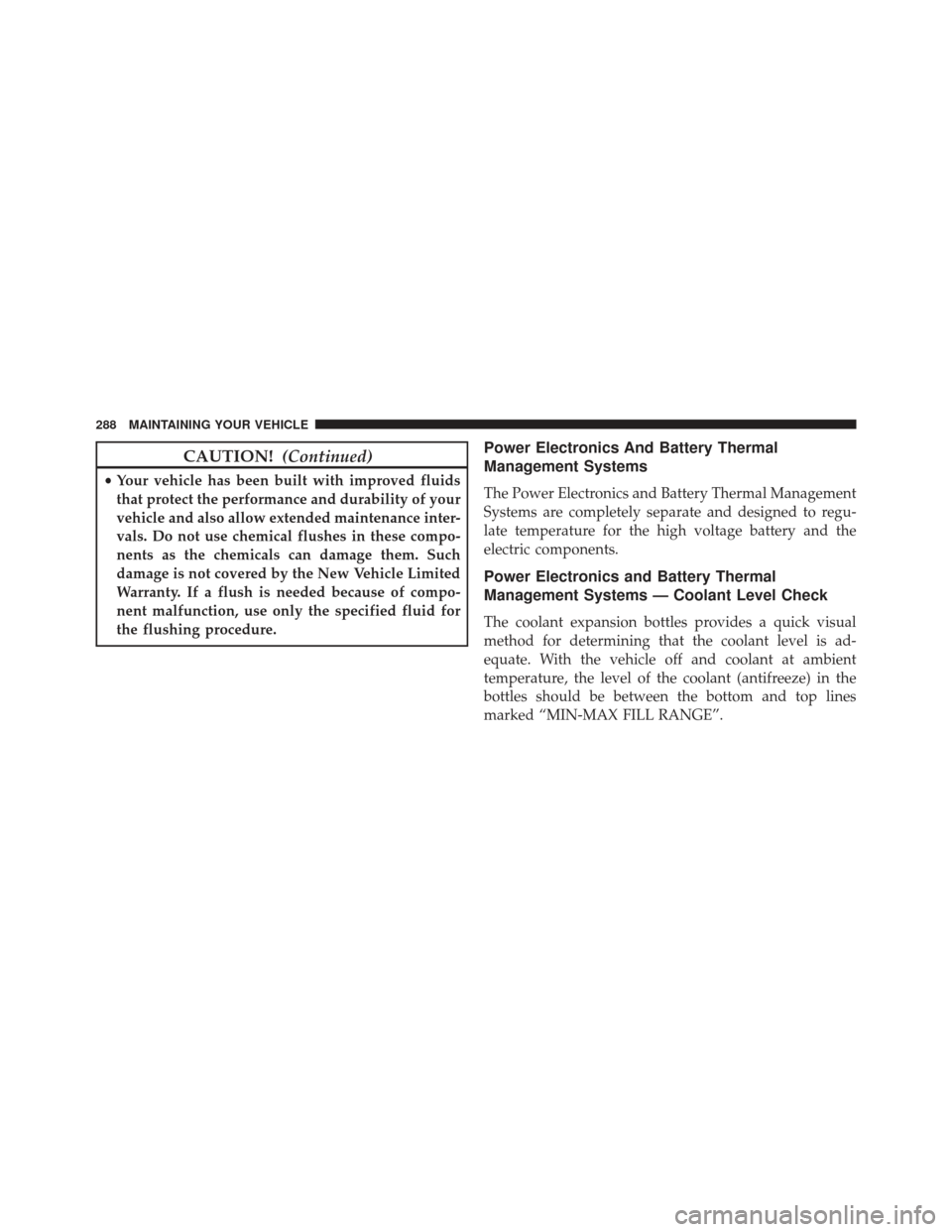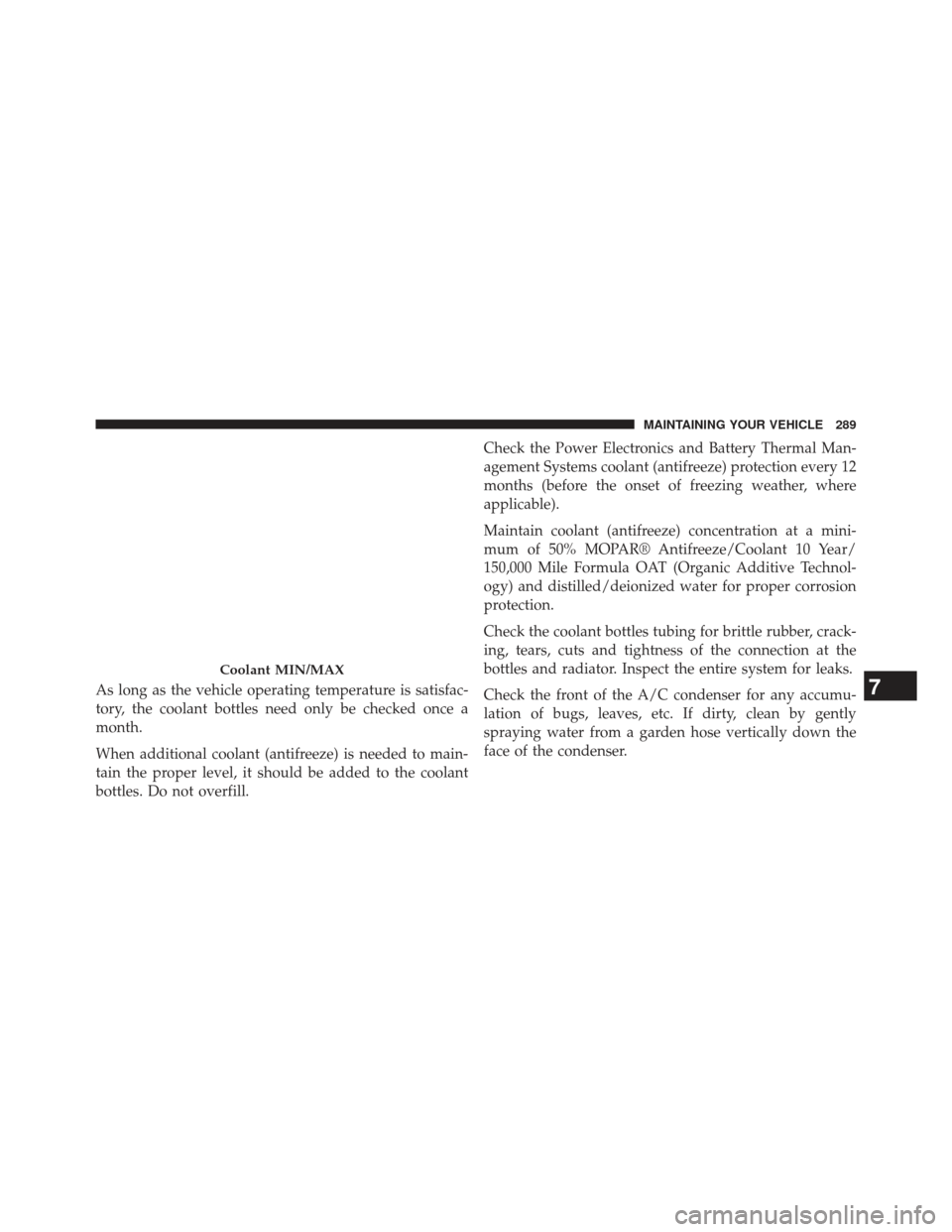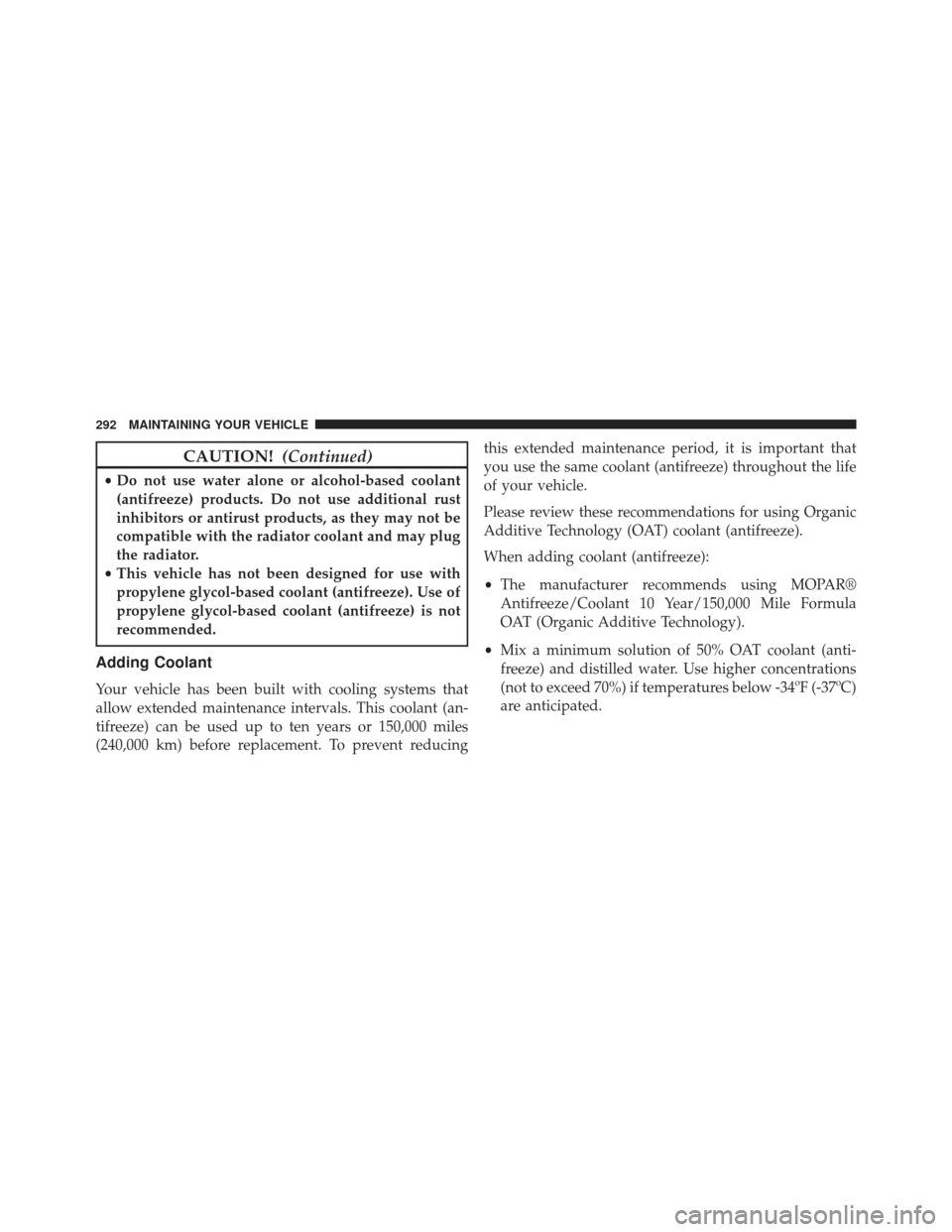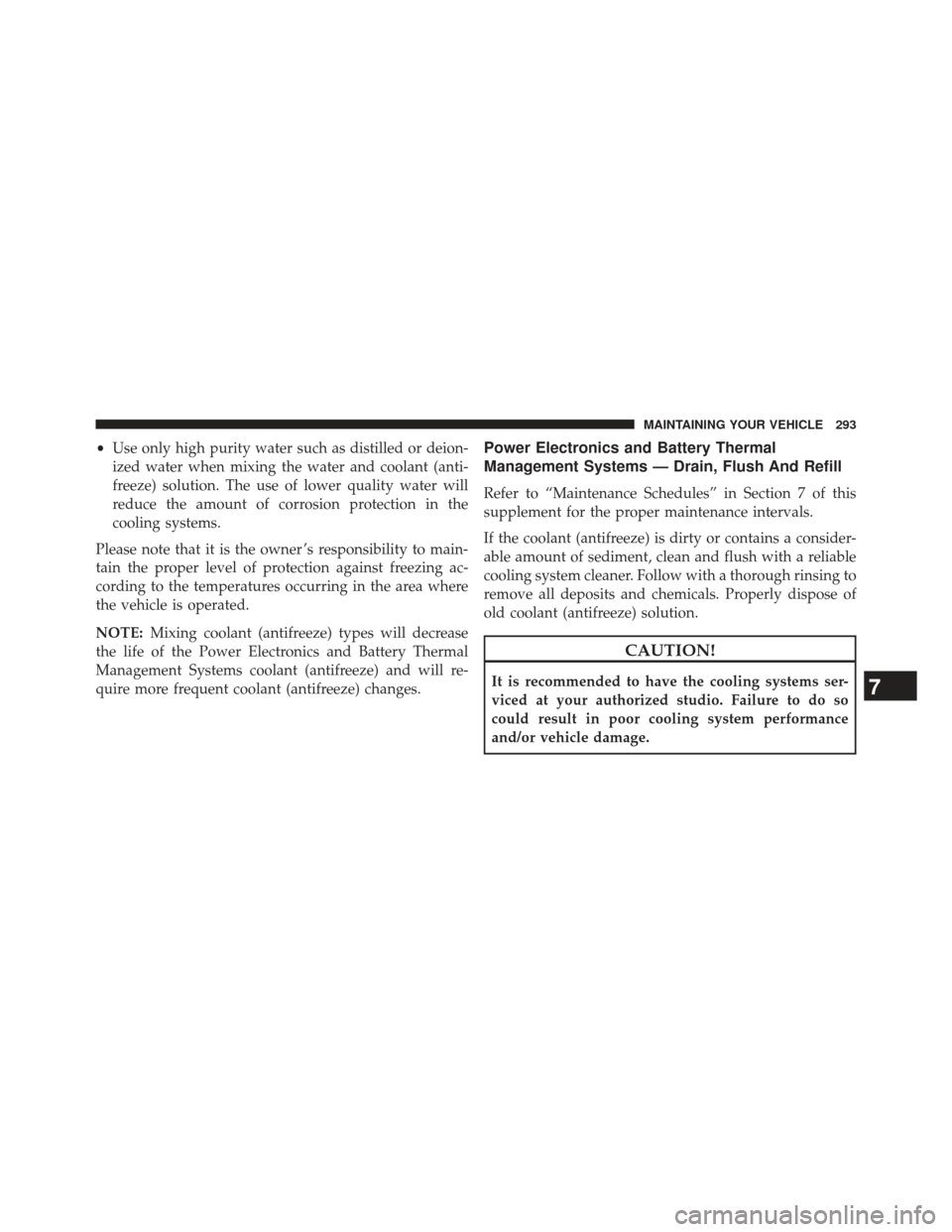Page 290 of 350

CAUTION!(Continued)
•Your vehicle has been built with improved fluids
that protect the performance and durability of your
vehicle and also allow extended maintenance inter-
vals. Do not use chemical flushes in these compo-
nents as the chemicals can damage them. Such
damage is not covered by the New Vehicle Limited
Warranty. If a flush is needed because of compo-
nent malfunction, use only the specified fluid for
the flushing procedure.
Power Electronics And Battery Thermal
Management Systems
The Power Electronics and Battery Thermal Management
Systems are completely separate and designed to regu-
late temperature for the high voltage battery and the
electric components.
Power Electronics and Battery Thermal
Management Systems — Coolant Level Check
The coolant expansion bottles provides a quick visual
method for determining that the coolant level is ad-
equate. With the vehicle off and coolant at ambient
temperature, the level of the coolant (antifreeze) in the
bottles should be between the bottom and top lines
marked “MIN-MAX FILL RANGE”.
288 MAINTAINING YOUR VEHICLE
Page 291 of 350

As long as the vehicle operating temperature is satisfac-
tory, the coolant bottles need only be checked once a
month.
When additional coolant (antifreeze) is needed to main-
tain the proper level, it should be added to the coolant
bottles. Do not overfill.Check the Power Electronics and Battery Thermal Man-
agement Systems coolant (antifreeze) protection every 12
months (before the onset of freezing weather, where
applicable).
Maintain coolant (antifreeze) concentration at a mini-
mum of 50% MOPAR® Antifreeze/Coolant 10 Year/
150,000 Mile Formula OAT (Organic Additive Technol-
ogy) and distilled/deionized water for proper corrosion
protection.
Check the coolant bottles tubing for brittle rubber, crack-
ing, tears, cuts and tightness of the connection at the
bottles and radiator. Inspect the entire system for leaks.
Check the front of the A/C condenser for any accumu-
lation of bugs, leaves, etc. If dirty, clean by gently
spraying water from a garden hose vertically down the
face of the condenser.
Coolant MIN/MAX
7
MAINTAINING YOUR VEHICLE 289
Page 294 of 350

CAUTION!(Continued)
•Do not use water alone or alcohol-based coolant
(antifreeze) products. Do not use additional rust
inhibitors or antirust products, as they may not be
compatible with the radiator coolant and may plug
the radiator.
• This vehicle has not been designed for use with
propylene glycol-based coolant (antifreeze). Use of
propylene glycol-based coolant (antifreeze) is not
recommended.
Adding Coolant
Your vehicle has been built with cooling systems that
allow extended maintenance intervals. This coolant (an-
tifreeze) can be used up to ten years or 150,000 miles
(240,000 km) before replacement. To prevent reducing this extended maintenance period, it is important that
you use the same coolant (antifreeze) throughout the life
of your vehicle.
Please review these recommendations for using Organic
Additive Technology (OAT) coolant (antifreeze).
When adding coolant (antifreeze):
•
The manufacturer recommends using MOPAR®
Antifreeze/Coolant 10 Year/150,000 Mile Formula
OAT (Organic Additive Technology).
• Mix a minimum solution of 50% OAT coolant (anti-
freeze) and distilled water. Use higher concentrations
(not to exceed 70%) if temperatures below -34ºF (-37ºC)
are anticipated.
292 MAINTAINING YOUR VEHICLE
Page 295 of 350

•Use only high purity water such as distilled or deion-
ized water when mixing the water and coolant (anti-
freeze) solution. The use of lower quality water will
reduce the amount of corrosion protection in the
cooling systems.
Please note that it is the owner ’s responsibility to main-
tain the proper level of protection against freezing ac-
cording to the temperatures occurring in the area where
the vehicle is operated.
NOTE: Mixing coolant (antifreeze) types will decrease
the life of the Power Electronics and Battery Thermal
Management Systems coolant (antifreeze) and will re-
quire more frequent coolant (antifreeze) changes.Power Electronics and Battery Thermal
Management Systems — Drain, Flush And Refill
Refer to “Maintenance Schedules” in Section 7 of this
supplement for the proper maintenance intervals.
If the coolant (antifreeze) is dirty or contains a consider-
able amount of sediment, clean and flush with a reliable
cooling system cleaner. Follow with a thorough rinsing to
remove all deposits and chemicals. Properly dispose of
old coolant (antifreeze) solution.
CAUTION!
It is recommended to have the cooling systems ser-
viced at your authorized studio. Failure to do so
could result in poor cooling system performance
and/or vehicle damage.7
MAINTAINING YOUR VEHICLE 293